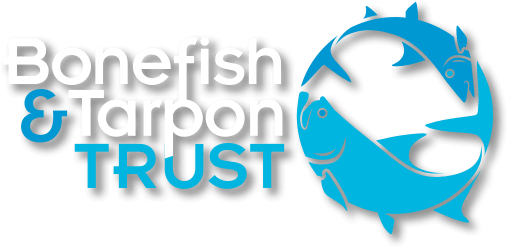For the first time, all species of tarpons, ladyfishes and bonefishes – marine species found globally in warm-water seas – have been assessed for The IUCN Red List of Threatened Species™. Of the 17 known species, two, Tarpon (Megalops atlanticus) and Roundjaw Bonefish (Albula glossodonta) are classified as Vulnerable. One species, Bonefish (Albula vulpes) is listed as Near Threatened, three species are listed as Least Concern and 11 are classified as Data Deficient.
This is the first time that fishery scientists, fish ecologists, and conservationists have come together to jointly produce an assessment of the threats facing these recreationally and economically important coastal fishes.
“Bonefish & Tarpon Trust (BTT) has long championed research and conservation of bonefish, tarpon and their habitats as a means to protect healthy fisheries, restore fisheries that have declined, and ensure healthy fisheries for the future,” says Dr Aaron Adams, Executive Director of the Bonefish and Tarpon Trust, and lead author of the paper. “BTT is pleased that the International Union for Conservation of Nature (IUCN) hosted the expert group to conduct this global review, which will greatly assist research and conservation efforts, and bring these species the attention they deserve.”
Bonefishes and tarpon species support recreational fisheries that have significant economic impacts, including lucrative fishing destinations that have supported coastal communities for generations. The review found that bonefish and tarpon populations appear most stable in regions supporting economically valuable destination and catch-and-release fisheries. This new information will be invaluable in helping governments make decisions that will safeguard the future of these species and fisheries which hold interest from recreational fishing stakeholders.
“Local fishermen have a strong economic incentive to support conservation, as the economic impact of a fish released numerous times during its lifespan exceeds the monetary value of its protein,” says Dr Andrij Horodysky, Assistant Professor at Hampton University and co-author of the paper. “The establishment of similar fisheries in developing nations may provide an economic incentive to promote conservation while simultaneously supporting local development and infrastructure that attracts conservation minded anglers.”
For many coastal fish species, the challenges for conservation and management go beyond addressing the threats posed by habitat loss and habitat degradation that occur worldwide. An additional and much more pressing threat is an overall lack of information on things as basic as abundance, habitat use and harvest. This global review demonstrates that tarpons, bonefishes, and ladyfishes frequently suffer from all these threats, greatly inhibiting the formulation of conservation and management plans.
“Although some of these species have survived millions of years of evolution on this planet, their greatest challenges may lie ahead, as habitat loss and coastal development continue to increase,” says Professor Kent Carpenter, manager of the IUCN Global Species Programme Marine Biodiversity Unit. “Given the wide distributions of many tarpons, bonefishes and ladyfishes, regional conservation initiatives and management plans should be initiated wherever they are possible.”
Given the economic and cultural importance of these species throughout their geographic ranges, more attention must be given to gathering information needed for the management of these species and addressing known threats, particularly in developing nations. This review provides the foundation from which such efforts may be launched. Funding for this work was provided by the Moore Family Foundation.
To receive a full copy of the scientific article, please send an email to info@bonefishtarpontrust.org.



